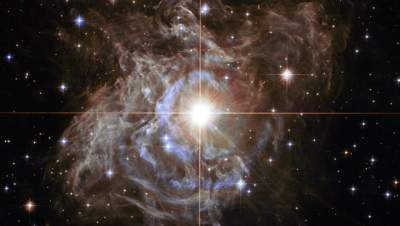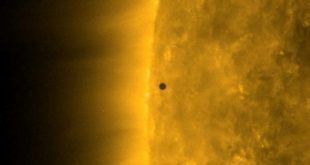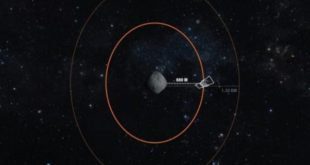 This star is about 4-5 times heavier than the Sun.
This star is about 4-5 times heavier than the Sun.
Telescope “Kepler” for the first time allowed astronomers to see how “boil” separate regions on the surface of the star from the class of so-called Cepheids variable stars, the brightness and the size of which gradually rise and fall over time, according to a paper accepted for publication in the journal MNRAS.
“One of the main mysteries in the pulsations of stars is that some of them a bit, but changing the frequency of his “flashes” a few weeks or months. We still do not know what causes these shifts, however, our observations showed that these 160 day cycles are unable to procreate is invisible to us luminary-companion,” said Gerakas Aliz (Aliz Derekas) from the Astrophysical Observatory of the Gotthard (Hungary).
Stars-Cepheids interesting to scientists because of their brightness gradually and smoothly increases and decreases as a result of internal processes in the subsoil. The frequency and strength of these pulsations depend on the absolute brightness of a star, which allows astronomers to use them to measure distances in space, and to explore how far away from us the different parts of the galaxy.
Dereks and his colleagues received a rare opportunity to lead a very long observation of one of the Cepheids, star V1154, due to the fact that she was in that part of the constellation Cygnus, which is continuously watched the telescope “Kepler” in the first four years of its work. This star is about 4-5 times heavier than the Sun, and 40-50 times higher than its diameter.
Thanks to the “Kepler”, scientists have the opportunity to follow the fluctuations in its brightness over several years, and to compare different cycles of its “flashes”. This analysis revealed two unusual features in the behavior of V1154, which, as the researchers write, caused them to doubt that Cepheids can be used for the precise measurement of distances in our Galaxy.
As it turned out, the brightness of the Cepheids not only grows to a maximum and then falls to at least five partial days, but almost imperceptibly, but changed every 159 and 1160 days. These pulsations are almost invisible against the background of more serious changes in brightness that occur during the 5-day cycle V1154, but similar oscillations if they are present at more distant Cepheids can introduce noticeable distortion in the measurements of the distances.
In addition to these unusual fluctuations, the nature of which has not yet been discovered by astronomers, they are also able to “see” in the data Kepler how “hard” this Cepheid – how they arise and are destroyed by special cells on its surface, where the hot plasma rises from the depths to the stars and back into its depths.
These structures, the so-called convection cells, there is the Sun and all other stars are relatively small – they are “grain” can be easily seen on any of the pictures of the Sun. Interestingly, V1154 they live much longer than our sun – they disappear after about 4-5 days, whereas in the Sun the convection cell there are tens of minutes.
As the researchers note, while they are not going to deprive of the Cepheids is the status of the main “stellar lighthouses” of the Galaxy, as this requires other long-term observations of such stars which will be possible only in 2018, when will be launched the successor to “Kepler” telescope TESS, in the field of view is a few tens of Cepheids in one of the first seasons of its work.








